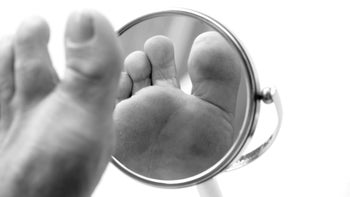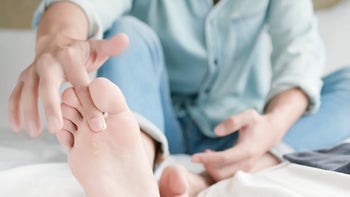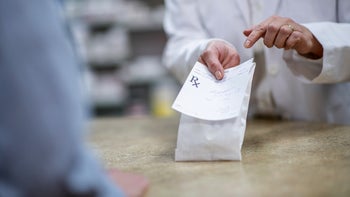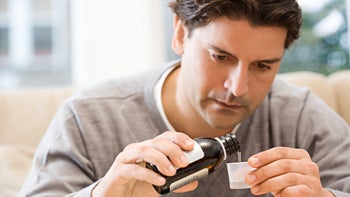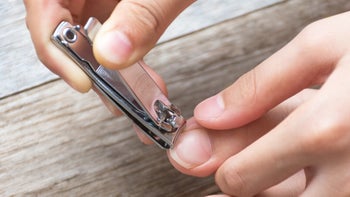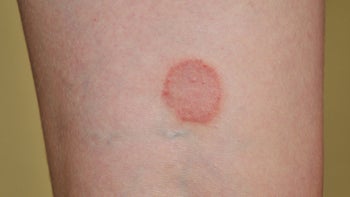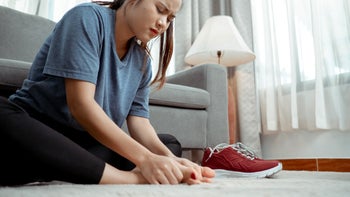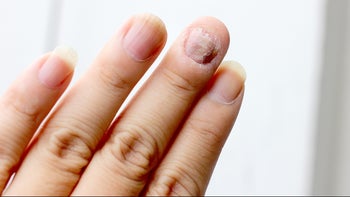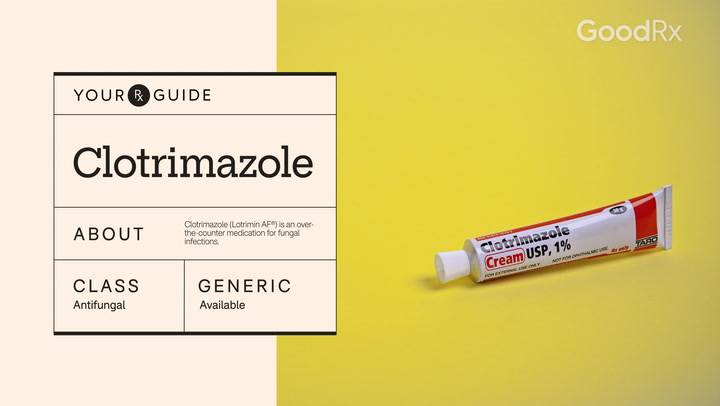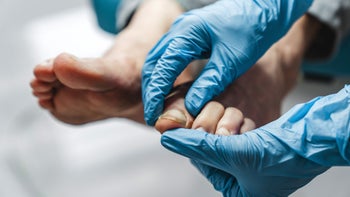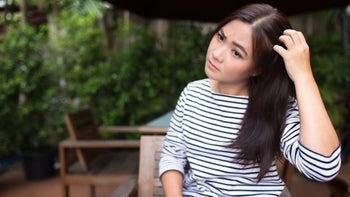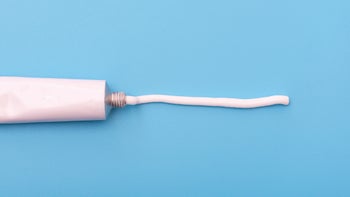
Nystatin vs. Clotrimazole: 5 Differences Between These Topical Antifungals
Key takeaways:
Nystatin (Nystop, Nyamyc) and clotrimazole (Lotrimin AF) are topical antifungal medications. Nystatin is available by prescription only, while clotrimazole is available over the counter.
Nystatin is used to treat non-vaginal skin infections caused by Candida yeasts. Clotrimazole treats a wider range of infections, including vaginal yeast infections, athlete’s foot, and jock itch.
Nystatin and clotrimazole both come in cream and ointment formulations. Clotrimazole is also available as a lotion, topical solution, and vaginal cream, while nystatin has a powder formulation that can be used for moist areas.
Nystatin and clotrimazole are both available as lower-cost generics. GoodRx can help you save over 60% off the average retail price at certain pharmacies.
Access savings on related medications
Table of contents

Even if you’re the cleanest person in the world, you can’t hide from mold and yeasts. These fungi are found everywhere — the air, soil, and sometimes even on your skin. And if the conditions are just right, a fungus can enter your skin and cause yeast infections, jock itch, or athlete’s foot.
Thankfully, fungal skin infections are relatively harmless and easily treated. A visit to the over-the-counter (OTC) foot care aisle at your local pharmacy quickly reveals that there are tons of lotions and creams out there to try.
But which to choose? Here, we’ll compare nystatin (Nystop, Nyamyc) and clotrimazole (Lotrimin AF) — two common topical antifungals — so you can determine if one is best for you.
1. Topical clotrimazole is available OTC
A variety of topical antifungal treatments are available OTC. Clotrimazole is one popular option available without a prescription. If you don’t have time to make an appointment with a healthcare provider, it’s a medication to consider.
Nystatin, on the other hand, is available by prescription only. You’ll need to reach out to your provider if you think you need it.
2. Nystatin and clotrimazole treat different fungal infections
Nystatin treats skin infections caused by a type of yeast called Candida albicans (C. albicans). It can also treat other similar yeasts in the Candida family.
Candida infections can occur anywhere on the skin. But they’re most often seen in skin folds that don’t get a chance to air out, such as armpits, under the breasts, and the groin. The nystatin powder is especially beneficial for very moist areas. Nystatin shouldn’t be applied vaginally for yeast infections, though.
Clotrimazole treats a wider range of fungal infections, including those caused by molds and yeasts (including C. albicans). Some of these infections may sound familiar:
Ringworm: An itchy, ring-like rash occurring anywhere on the body
Jock itch: An itchy rash in the groin area
Athlete’s foot: An itchy, flaky, rash on the feet
Clotrimazole also treats an infection called tinea versicolor, which is caused by a yeast called Malassezia furfur. This type of non-contagious fungal infection causes discolored skin patches on your face, trunk, and upper arms or legs.
What’s more, both medications are common treatments for diaper rash.
3. Nystatin and clotrimazole fight fungal infections in their own way
Nystatin works by stopping fungi from growing. It attaches to specific fats (called sterols) within the outer barriers (plasma membranes) of fungi. This creates miniature holes that cause fungi cells to leak and eventually die. The infection should start getting better a few days after starting nystatin, but it can take longer than that to fully treat it. You should continue to use nystatin until the infection is completely gone (and often for a short period of time after your symptoms go away).
Clotrimazole has a similar effect, but it works in a slightly different way. It interferes with the production of new sterols that normally give a fungal cell its structure. This makes it harder for new fungi cells to create a sturdy outer barrier. This destroys the fungus.
You can expect to experience some relief a few days after starting clotrimazole, but it may take up to 4 to 6 weeks to see a full response for certain skin infections. If your infection isn’t resolved by then, it’s time to reach out to your healthcare provider for an alternative. For vaginal infections, reach out to your provider if you aren’t seeing any improvements after 7 days.
4. Nystatin and clotrimazole are both available in several doses and formulations
Nystatin and clotrimazole come in a wide variety of doses and formulations. These include:
Clotrimazole | |
Formulation | Dose |
Vaginal cream | 1%, 2% |
Skin cream | 1% |
Lotion | 1% |
Ointment | 1% |
Topical solution | 1% |
Nystatin | |
Formulation | Dose |
Cream | 100,000 units/gram |
Ointment | 100,000 units/gram |
Powder | 100,000 units/gram |
The best formulation to try depends on many factors, including the type and location of your infection. Your healthcare provider and pharmacist can help you narrow down your options. But there are a few pointers to keep in mind:
Ointments tend to be heavier and greasier than lotions and creams. But they may be better for very dry or scaly areas of skin.
Lotions and creams are a little lighter than ointments. They’re easier to spread on your skin, so they may be better for large areas, your scalp, or hairy areas.
Nystatin powder has a knack for absorbing moisture while treating an infection. You can sprinkle it inside your shoes or socks to treat infections on your feet.
Never use nystatin for a vaginal yeast infection. Between the two, only clotrimazole cream should be used. Make sure to choose a clotrimazole product that’s formulated for vaginal use and comes with a vaginal applicator.
5. Both medications are well tolerated, but their potential side effects aren’t exactly the same
Topical nystatin and clotrimazole are both well tolerated. It’s unlikely that you’ll experience major side effects with either one.
Still, certain side effects are possible. Some nystatin and clotrimazole side effects overlap, while others slightly differ and depend on which formulation is used.
Nystatin formulation | Nystatin side effects |
Cream, ointment, powder | Burning Itching Pain Rash |
Clotrimazole formulation | Clotrimazole side effects |
Cream, ointment, solution | Blistering Burning Hives Irritation Itching Peeling Reddening of the skin Stinging Swelling |
Vaginal cream | Mild increase in vaginal burning, itching, or irritation |
Mild skin irritation likely isn’t a big deal. But you should reach out to your healthcare team if you experience any of the other side effects listed above.
How to to save on nystatin and clotrimazole
Nystatin and clotrimazole are both available as lower-cost generics. GoodRx can help you save over 60% off the average retail price of the generic versions of nystatin and clotrimazole.
Generic nystatin’s price at certain pharmacies is as low as $9.28 with a free GoodRx discount. If you fill it through the pharmacy, generic clotrimazole’s price at certain pharmacies is as low as $13.64 with a free GoodRx discount.
The bottom line
Nystatin and clotrimazole are topical medications used to treat fungal infections. Nystatin is only available by prescription and treats non-vaginal skin infections caused by Candida yeasts. Clotrimazole is available over the counter (OTC) and treats yeasts and molds that cause vaginal yeast infections, athlete’s foot, jock itch, and more. Both medications are well tolerated, and they come in various topical formulations. Your healthcare provider or pharmacist can help you find the best treatment option for your needs.
Why trust our experts?
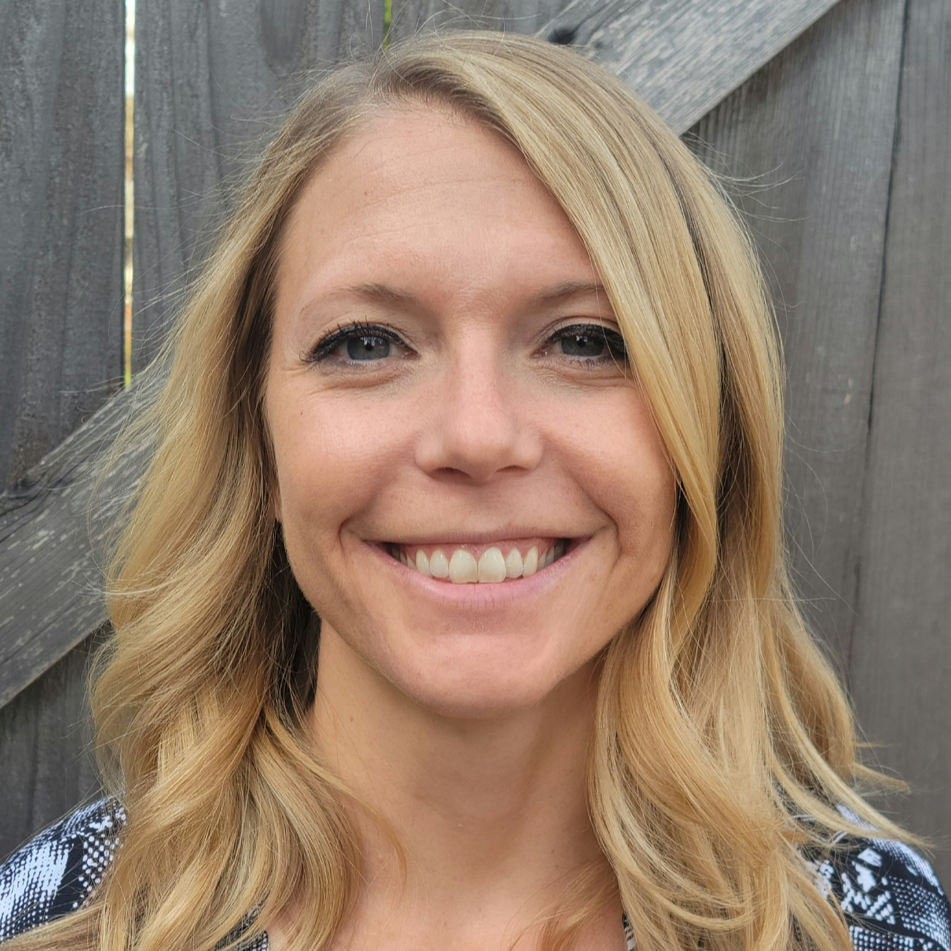


References
Benitez Ojeda, A. B., et al. (2023). Diaper dermatitis. StatPearls.
Centers for Disease Control and Prevention. (2019). About fungal diseases.
Khatter, N. J., et al. (2023). Clotrimazole. StatPearls.
Metin, A., et al. (2018). Recurrent candidal intertrigo: Challenges and solutions. Clinical, Cosmetic and Investigational Dermatology.
National Institute of Diabetes and Digestive and Kidney Diseases. (2020). Nystatin. LiverTox: Clinical and Research Information on Drug-Induced Liver Injury.
Poojary, S. A. (2017). Topical antifungals. Clinical Dermatology Review.
RPK Pharmaceuticals, Inc. (2023). Clotrimazole solution [package insert]. DailyMed.
Strategic Sourcing Services LLC. (2023). Clotrimazole cream [package insert]. DailyMed.
Torrent Pharmaceuticals Limited. (2023). Nystatin cream [package insert]. DailyMed.


